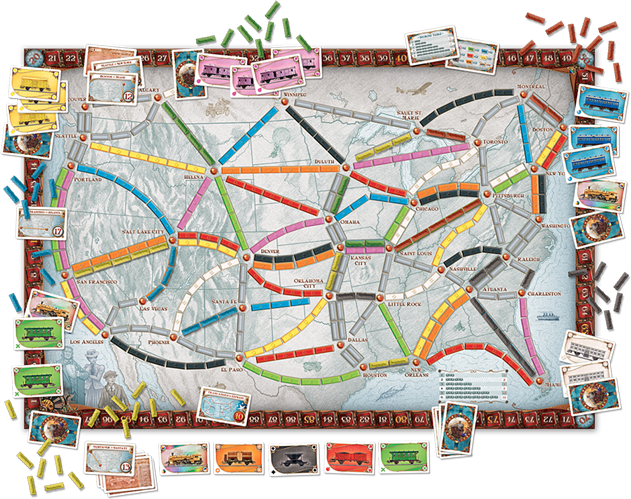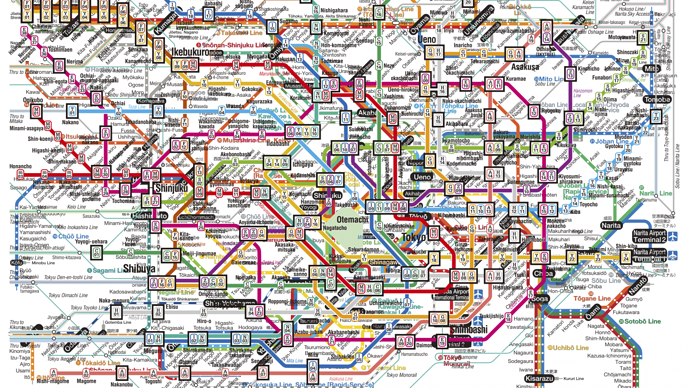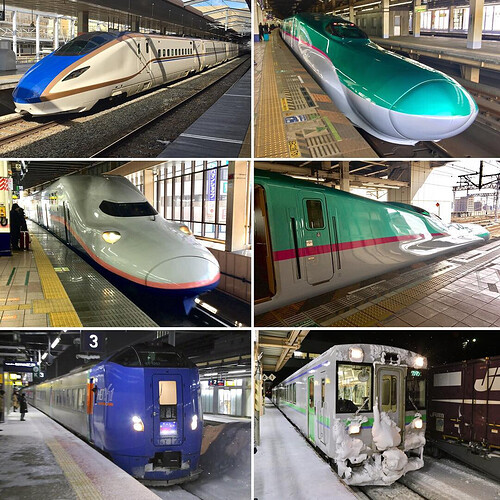If you’d told me last year that in March 2021 we’d have an uncontrollable, savage, bloodthirsty beast shitting all over the White House I would have assumed you’d meant Trump.
most of world experience is that passenger train isn’t really economical to rural areas without subsidies AND a healthy commuter culture AND a route between two bigger cities. it’s great for cities and suburbs where the demand lets it run regularly, but cars become mostly empty outside of one hour radius, and it quickly turns into semi-daily service, not to mention the last mile in rural places is arguably an even bigger problem.
but even with demand and subsidies, then it runs into counter-effort by bus/car/airport interests. rural areas are just not going to get saved by only one option, even if the option were deployed intelligently for the past 50 years. the goal isn’t even clear, making rural towns viable is possible by creating opportunities there and letting them slowly grow, rather than simply giving them options to commute.
Public transportation in Tokyo and throughout most of urban Japan is actually great. But it takes more than a sleek new rail line to make public transportation great. The entire city infrastructure is built around the lines, so that everything to and from the stations is walkable and accessible.
One disappointing aspect of living in semi-rural Japan is that a car is necessary here. If I ever move to Tokyo I’ll be very happy to be free of the need to own a car.
Yeah, that looks terribly confusing, but even as an non-Japanese speaker, I didn’t find it very hard to navigate when we visited. And we went all over the place.
Sure, this is just a diagram some entity made showing every line in Tokyo. Not one anyone would ever use it for practical purposes. On the ground the picture is considerably clearer.
And navigating around Japan today is as easy as typing into Google: “from Station X to Station Y.”
Google will return all the possible routes, fares, and departure times.
When I first lived in Japan in the 90s, there were few English train route signs, no IC cards, no English announcements, and of course, no smartphones, no Google, or even a functional Internet. Predictably, there were also far fewer tourists.
I just want something like the Shinkansen here. Still not as fast as flying, but so much more relaxing, IMHO
Shinkansen or not, it still took us all day and several trains to get from Tokyo to Niseko, but it was still cheaper and more fun/relaxing than flying.
Just rode the middle left one yesterday. The Max Toki. A rare double decker that’s going to be put out to pasture soon.
lol is that the complete us railway network?
Nah, that’s the “national” rail system. There are local/regional transit systems, mostly in and around bigger cities, but they aren’t run by Amtrak. Amtrak also runs passenger service to “bigger” towns in the empty areas, but it’s slow and inconvenient…mostly for novelty.
There used to be passenger service to most small towns and cities (there’s always old train stations), but that’s mostly gone now. The US considers rail travel a thing of the past, pretty much went out of style around WW2.
ETA: there is perfectly functional track nearly everywhere in the US, but it’s all used for freight. I honestly don’t know how much investment it would take to add passenger service back on those lines.
LOL fuck you South Dakota.
So can we get rich if we start a new rail line in the US?
Only if you can get the government to give you a bazillion dollars to do it.
Thanks US state department. Glad the US doesn’t use solitary confinement also glad we don’t have Guantanamo still ![]()
https://twitter.com/davidcfathi/status/1377428114469425156?s=21
The Flint River served as an unofficial waste disposal site for treated and untreated refuse from the many local industries - carriage and car factories, meatpacking plants, lumber and paper mills, etc. The waterway has also received raw sewage from the city’s waste treatment plant, agricultural and urban runoff, and toxics from leaching landfills.
The city began supplying residents with Flint River water in April 2014. A study conducted the following year by researchers at Virginia Tech revealed the problem: Water samples collected from 252 homes through a resident-organized effort indicated citywide lead levels had spiked, with nearly 17 percent of samples registering above the federal “action level” of 15 parts per billion (ppb), the level at which corrective action must be taken. More than 40 percent measured above 5 ppb of lead, which the researchers considered an indication of a “very serious” problem.
Even more alarming were findings reported in September 2015 by Flint pediatrician Mona Hanna-Attisha: The incidence of elevated blood-lead levels in children citywide had nearly doubled since 2014—and nearly tripled in certain neighborhoods. As Hanna-Attisha noted, “Lead is one of the most damning things you can do to a child in their entire life-course trajectory.”
Flint’s water supply was plagued by more than lead. The city’s switch from Detroit water to the Flint River coincided with an outbreak of Legionnaires’ disease (a severe form of pneumonia) that killed 12 and sickened at least 87 people between June 2014 and October 2015. The third-largest outbreak of Legionnaires’ disease recorded in U.S. history—as well as the discovery in 2014 of fecal coliform bacteria in city water—was likely a result of the city’s failure to maintain sufficient chlorine in its water mains to disinfect the water. Ironically, the city’s corrective measure—adding more chlorine without addressing other underlying issues—created a new problem: elevated levels of total trihalomethanes (TTHM), cancer-causing chemicals that are by-products of the chlorination of water.
Lead stays in the body forever, those kids will be suffering these consequences until the day they die.
Spending a bunch of money on infrastructure is great but the fact we have to make safe drinking water a priority at the national level or it won’t happen in 2021 while the billionaire class plays space and we all like it shows how fucked we are.
I think you’ve got to be doing both - big scientific exploration / experimentation stuff, and clean water.
Honestly the “plays space” stuff bothers me less than the billionaires building post apocalyptic bunkers in the desert and yachts that can survive out at sea for months so that, you know, in the collapse of society they will have some options. Apart from paying taxes, one of the best things billionaires could do is wild and out there scientific exploration.
The infrastructure bill is definitely too small
https://twitter.com/davidmwessel/status/1377403187972476928?s=21


